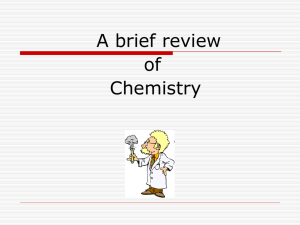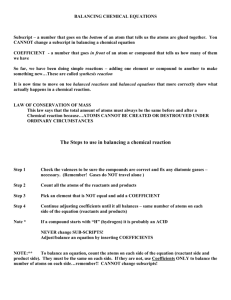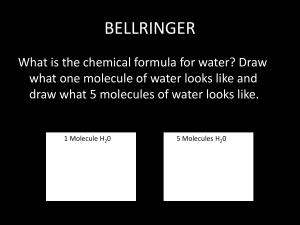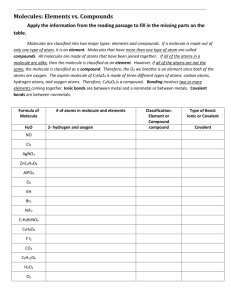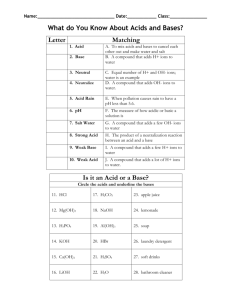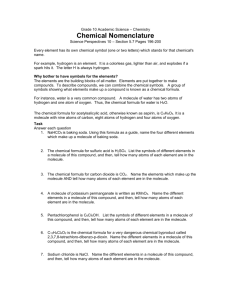Basic Chemistry Notes
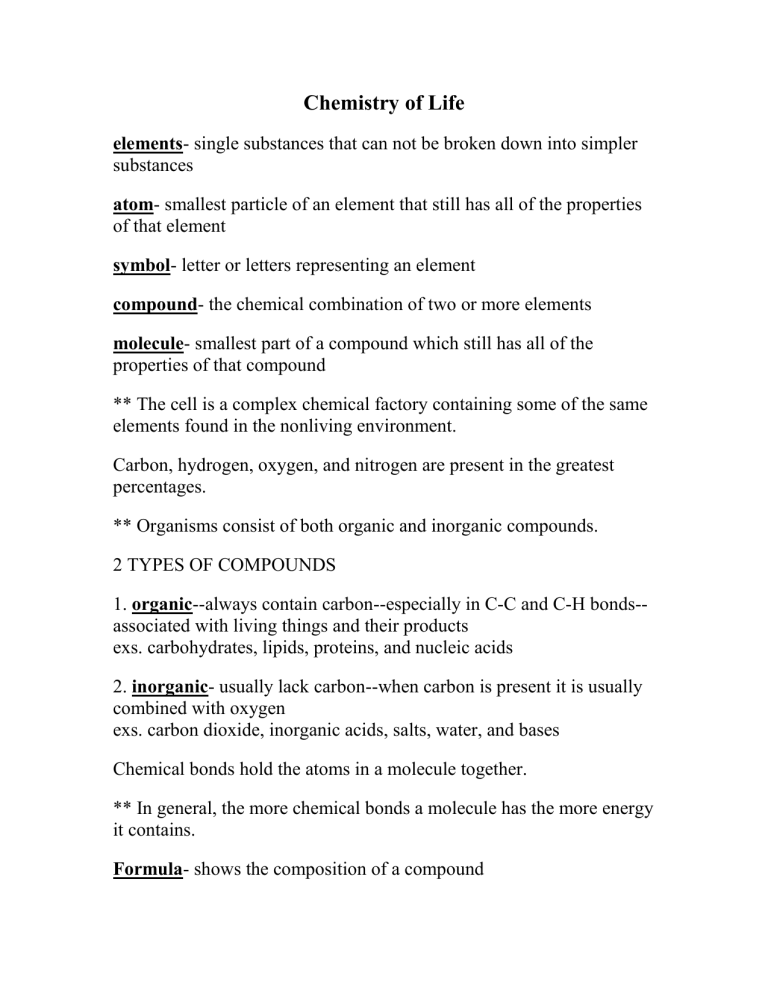
Chemistry of Life
elements - single substances that can not be broken down into simpler substances atom - smallest particle of an element that still has all of the properties of that element symbol - letter or letters representing an element compound - the chemical combination of two or more elements molecule - smallest part of a compound which still has all of the properties of that compound
** The cell is a complex chemical factory containing some of the same elements found in the nonliving environment.
Carbon, hydrogen, oxygen, and nitrogen are present in the greatest percentages.
** Organisms consist of both organic and inorganic compounds.
2 TYPES OF COMPOUNDS
1. organic --always contain carbon--especially in C-C and C-H bonds-associated with living things and their products exs. carbohydrates, lipids, proteins, and nucleic acids
2. inorganic - usually lack carbon--when carbon is present it is usually combined with oxygen exs. carbon dioxide, inorganic acids, salts, water, and bases
Chemical bonds hold the atoms in a molecule together.
** In general, the more chemical bonds a molecule has the more energy it contains.
Formula - shows the composition of a compound
[TYPES OF COMPOUND FORMULAE]
1. Structural Formula --indicates the kinds of atoms in a molecule, their proportions, and how the atoms are arranged or held together
2. Molecular formula --indicates the actual nos. and kinds of atoms in a molecule --does NOT indicate structural setup
3. Empirical Formula --shows the symbols of the elements in a compound followed by small subscript numbers showing the ratio of atoms in the compound
Acids : substances which ionize into positively charged hydrogen ions in a water solution (H+ ions) ex. HCl ---- H+ + Cl-
-- Acids turn litmus paper blue and usually taste sour.
Bases : ionize into negatively charged hydroxide ions in a water solution (OH-) ex. KOH ---- K+ + OH-
--- Bases turn litmus blue.
-- Bases usually feel slippery to touch and taste bitter.
Neutralization Rxs. -- important in living things
Acid + Base ---- Salt + Water ex. HCl + NaOH ---- NaCl + HOH
(This is how stomach antacids work.) pH scale: measures degree of substance alkalinity or acidity alkaline = base
** Most body fluids have a neutral pH (6-8)
(Major Types of Reactions in Living Things)
1. Dehydration Synthesis : chemical combination of two small molecules to make another larger molecule with water being driven off
2. Hydrolysis : (enzymatic hydrolysis) (digestion) -- addition of water to a larger molecule to form two or more smaller molecules -- opposite of dehydration synthesis


